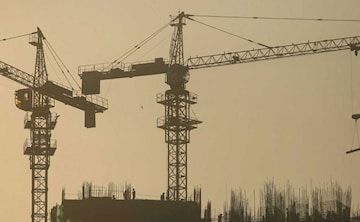AFTER a broad-based deceleration in the initial quarters of this fiscal year, India’s growth rate is projected to fall to 6 per cent, the World Bank said on Sunday.
In 2018-19, the growth rate of the country stood at 6.9 per cent.
However, the bank in its latest edition of the South Asia Economic Focus said the country was expected to gradually recover to 6.9 per cent in 2021 and 7.2 per cent in 2022 as it assumed that the monetary stance would remain accommodative, given benign price dynamics.
After a broad-based deceleration in the initial quarters of this fiscal year, India’s growth rate is projected to fall to 6 per cent, the World Bank said on Sunday.
In 2018-19, the growth rate of the country stood at 6.9 per cent.
However, the bank in its latest edition of the South Asia Economic Focus said the country was expected to gradually recover to 6.9 per cent in 2021 and 7.2 per cent in 2022 as it assumed that the monetary stance would remain accommodative, given benign price dynamics.
While industrial output growth increased to 6.9 per cent due to a pick-up in manufacturing and construction activities, the growth in agriculture and the services sector moderated to 2.9 and 7.5 per cent, respectively.
In the first quarter of 2019-20, the economy experienced a significant and broad-based growth deceleration with a sharp decline in private consumption on the demand side and the weakening of growth in both industry and services on the supply side, the report said.
Reflecting on the below-trend economic momentum and persistently low food prices, the headline inflation averaged 3.4 per cent in 2018-19 and remained well below the RBI”s mid-range target of 4 per cent in the first half of 2019-2020. This allowed the RBI to ease monetary policy via a cumulative 135 basis point cut in the repo rate since January 2019 and shift the policy stance from “neutral” to “accommodative”, it said.
The World Bank report also noted that the current account deficit had widened to 2.1 per cent of the GDP in 2018-19 from 1.8 per cent a year before, mostly reflecting a deteriorating trade balance.
(Courtesy: PTI)


